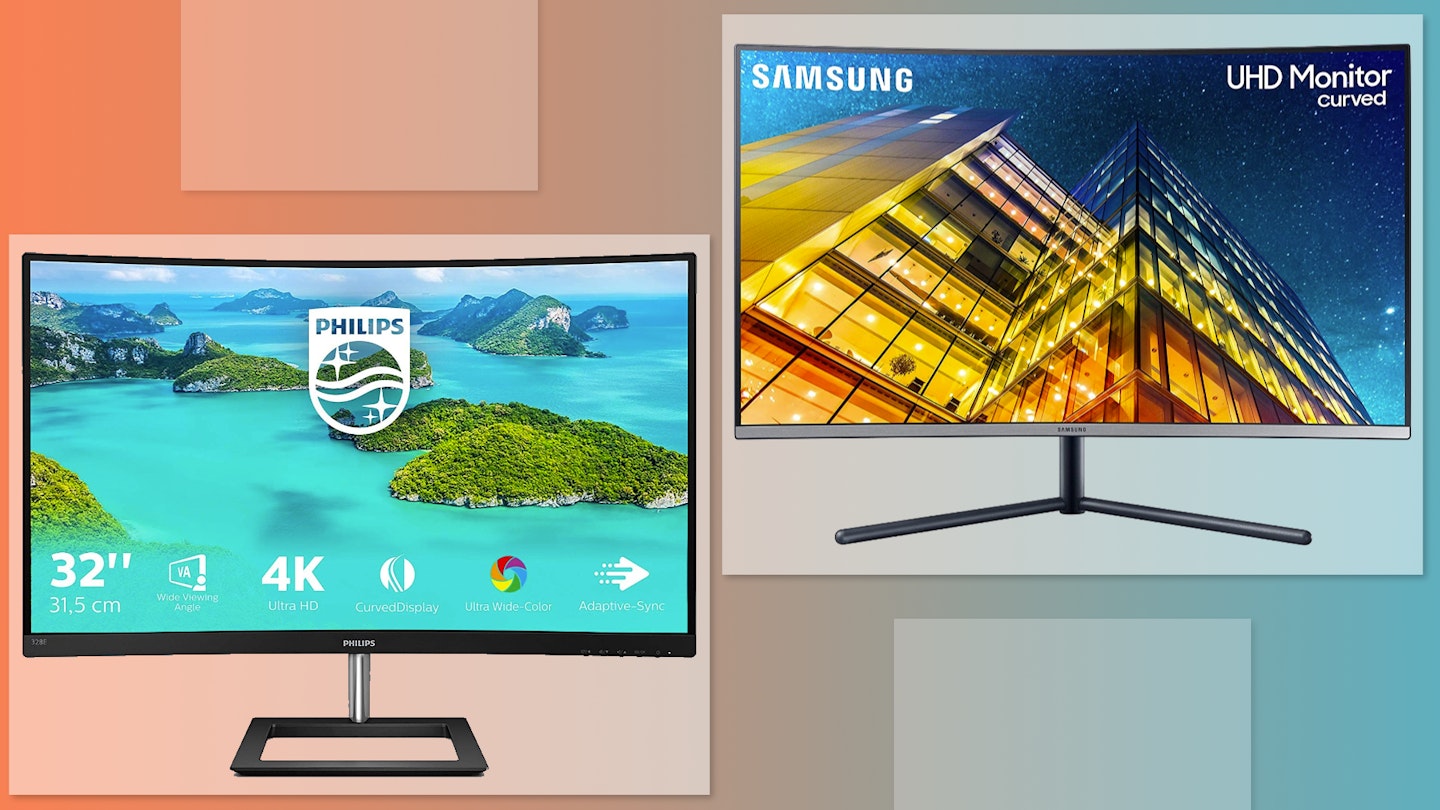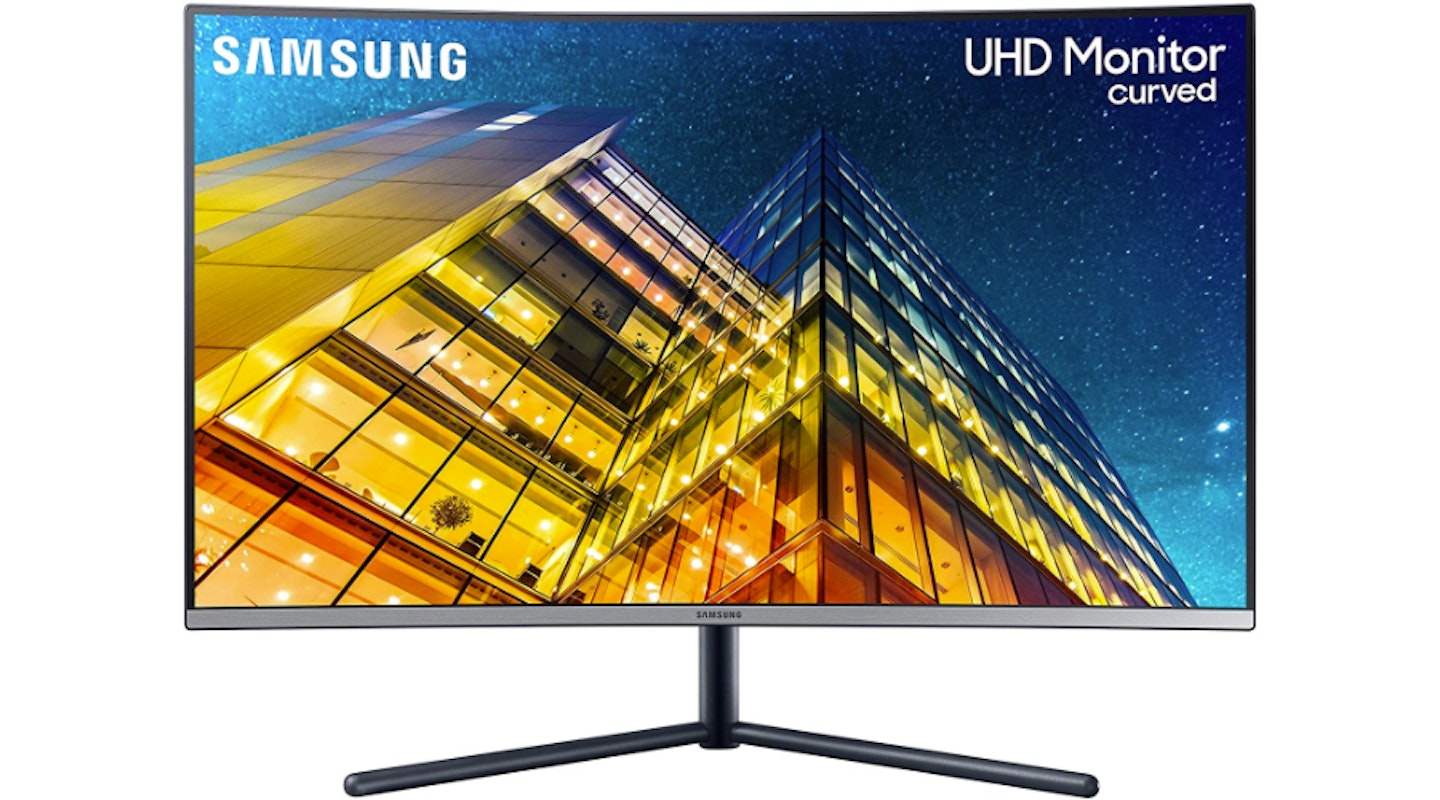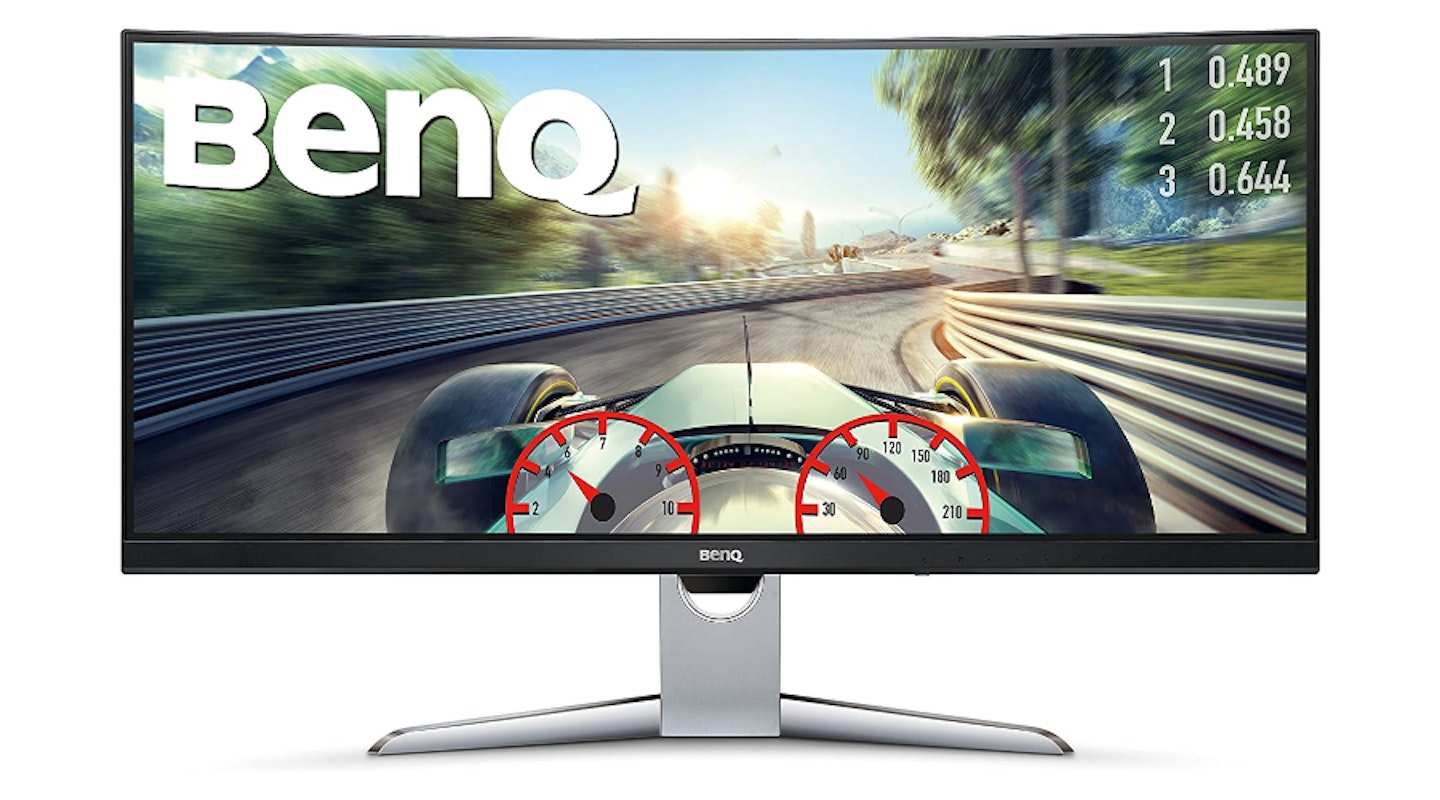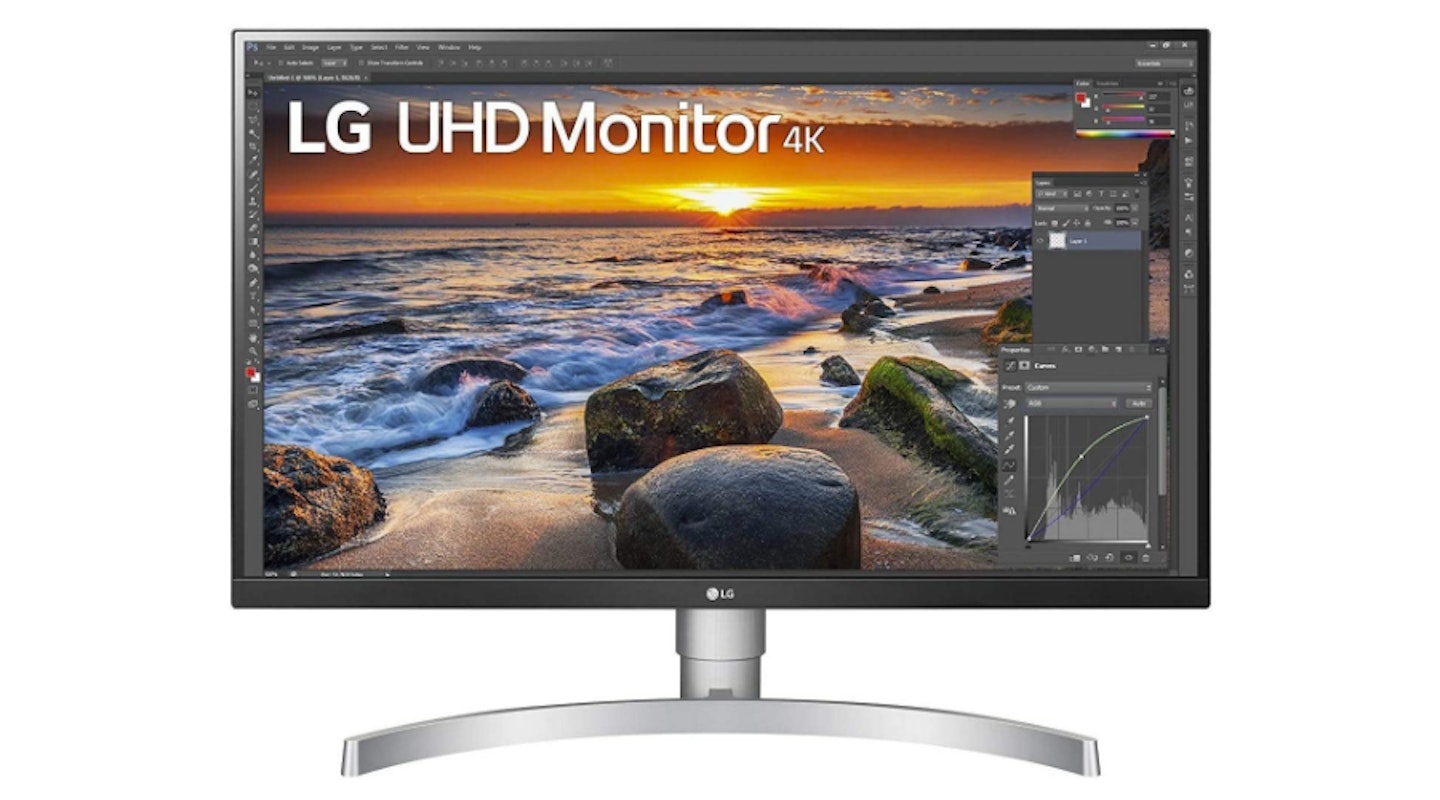4K curved monitors are smart bits of kit, taking advantage of the clarity of Ultra HD and the field of view provided by curved panels. To help you locate the best 4K curved monitor for you, we’ve collected together the best options into the guide below.
If you’re new to the world of 4K curved monitors, you may be wondering what all the fuss is about and whether such a buy is correct for you. To help get you up to speed, we’ve put together a quick guide to the pros of the technology. It’s explained easiest as two separate parts:
What are the benefits of 4K UHD?
4K UHD refers to the resolution of a screen. A 4K screen has 3840x2160 pixels: four times that of standard Full HD (1920 x 1080). Because there are more pixels available, the display is far clearer and carrying vastly improved sharpness.
Such a large amount of pixels requires a large screen, which, in turn, means that there is more space for displaying. It's also at a greater clarity than can be achieved with Full HD - you can have a clearer image of more open windows.
Any negatives? There’s nothing negative about 4K UHD - the main issue is with input devices. To fully appreciate the power of 4K visuals, your hardware needs to be up to scratch.
What are the benefits of a curved monitor?
The general theory behind a curved screen is that the shape mirrors the curvature of human eyes, and thus provides a more natural viewing experience. As opposed to the unnatural flatness of standard monitors, curved monitors are celebrated for their immersive nature, and allowing users to take advantage of their peripheral vision.
As ViewSonic notes on its blog, human vision is based on length, width and height. Curved monitors “take advantage of all three dimensions” and increase peripheral vision. It looks good, and it’s also kinder on the eyes and can help reduce eye strain.
Not all curved monitors have the same curve - some are more acute than others. To find out more, head to the bottom of the page to our FAQ.
Any negatives? Due to the angles of a curved monitor, they need to be viewed front-on, with the image quality quickly dropping off if viewed from an angle. Curved monitors can also be disorienting for some creative and engineering applications, especially those dealing with straight lines - the curve can mislead some and affect accuracy.
A note on availability
There are not many curved 4k monitors on the market currently, though it is sure to grow as technology progresses. Many curved monitors are still sitting at 1080p or 1440p. Below, we’ve selected the best of a limited bunch, so naturally, there isn’t an overwhelming amount of choice. There are sure to be more options on the way.
However, to provide you with a little more choice, after our roundup of the best curved 4K monitors we have listed two alternative monitor options that may fulfil your monitor needs.
Here is our roundup of the best curved 4K monitors:
The best 4K curved monitors
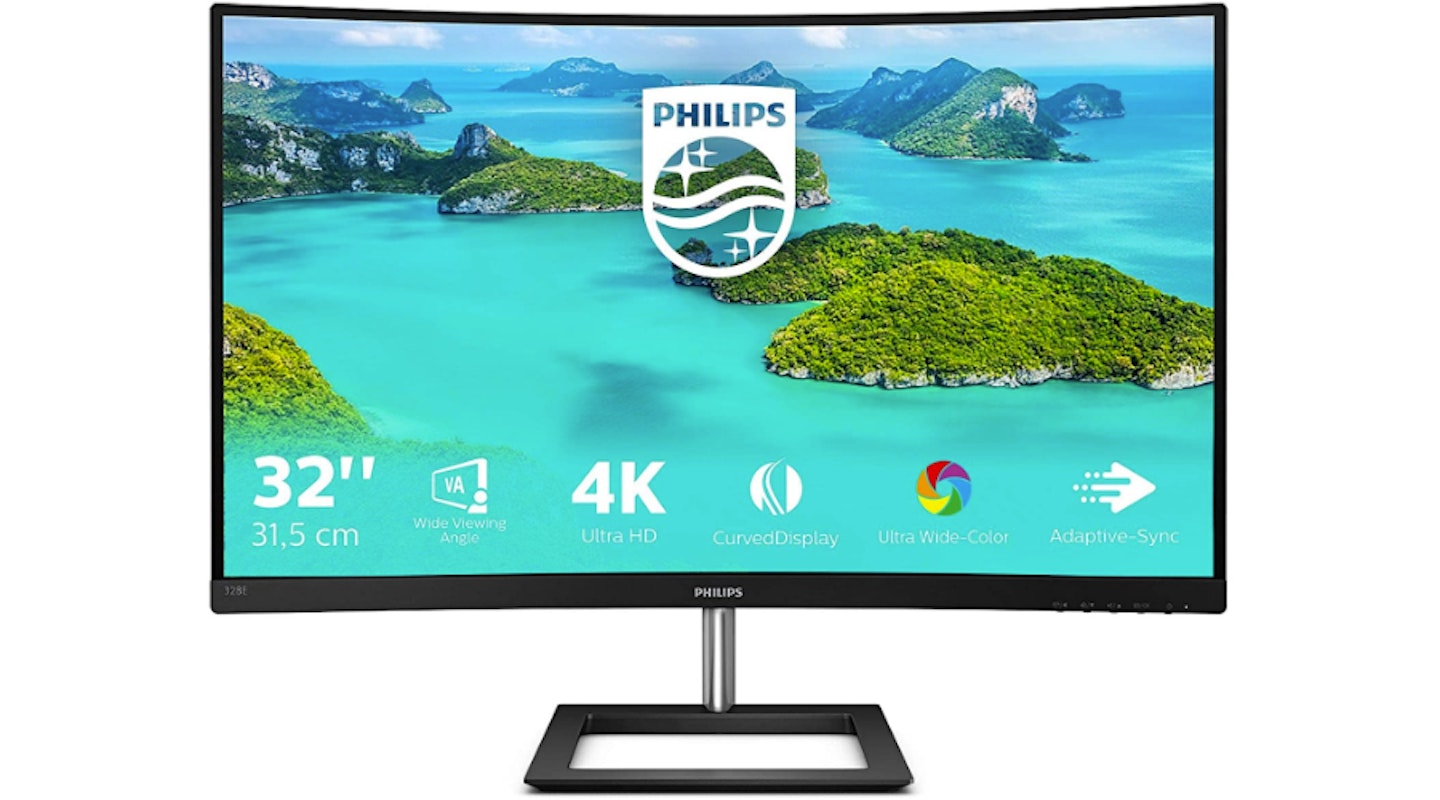
The Philips 328E1CA is a well designed and popular curved monitor. It carries a 32-inch VA panel with 1500R curvature that is pleasant on the eye. The size provides plenty of on-screen workspace with a FOV of around 178-degrees. The colour gamut covers 99% NTSC and 122% sRGB, and the contrast ratio sits at 2,500:1: this all works to provide colours with a natural vividness and pop.
The 328E1CA has three inputs for a nicely versatile home office system: two HDMI 2.0 and one DisplayPort 1.2.
60Hz refresh rate and 4ms response times don’t make it the most exciting proposition for hardcore 4K UHD PC gamers, but console gamers looking for a versatile desktop monitor will be just fine. Adaptive Sync is supported.
| Screen Size: | 32-inches |
| Curvature: | 1500R |
| Connections: | HDMI, DisplayPort |
An early adopter of the 4K and curved screen combo, the Samsung U32R592 is a great pick. The stunning VA screen kicks out an evenly saturated colour profile, which is nice and accurate thanks to the 104% sRGB coverage - though it’s noted by many that a little calibration is needed for it to perform at its best. The width of the 32-inch screen coupled with the 4K UHD resolution ensures that there’s plenty of working space, and the 1500R curve is, again, spot-on for comfort and reducing eye strain.
Ports are limited but will do for most: one HDMI 2.0 and one mini DisplayPort. The refresh sits at 60Hz and there is no variable refresh rate support.
Those looking to mount the monitor will need to be aware that this monitor is not compatible with any VESA standard, as it uses a unique mounting system. A VESA adapter will need to be purchased.
| Screen Size: | 32-inches |
| Curvature: | 1500R |
| Connections: | HDMI, DisplayPort |
The best alternatives to curved 4K monitors
If your reason for seeking a curved 4K monitor is to gain some extra workspace, forgoing the 4K resolution and opting for a curved ultra-wide monitor is a viable alternative. There are expensive ultrawide monitors available, but thankfully the BenQ EX3501R sits at a reasonable price.
It carries a sizeable 35-inch screen with a 21:9 ratio, 1,800R curve and 1440p resolution - a noticeable bump up from a Full HD monitor. Its 2,500:1 contrast ratio and HDR support result in an arresting image, while the 100% sRGB coverage provides vibrancy. It requires a little calibration from the box, but the final experience is worth the tinkering.
AMD FreeSync is supported, as is a 100Hz refresh rate. It carries two HDMI 2.0, DisplayPort 1.4, two USB 3.0 (downstream) and one USB Type-C.
If your reason for needing a curved 4K monitor was to gain some clarity on your spreadsheets or creative projects, then a flat panel 4K option may serve just as well. There are many choices of flat-panelled 4K UHD monitors, but for our money, the LG 27UN83A is a top choice. Not only is it well-featured, but it also sits within the same price range as curved 4K monitors, so you’re not shelling out more than you would’ve otherwise.
The headlines here impress, with 27-inch IPS 4K UHD, 99% sRGB coverage and HDR support. It’s got a 60Hz refresh rate and support for FreeSync. The overall experience with this monitor is enjoyable, with its bright, crisp image impressing consistently.
Port wise, we’re looking at two HDMI, one DisplayPort 1.4, one USB Type-C and two USB 3.0.
FAQs
HDMI and DisplayPorts: explained
Port interfaces have a direct effect on the resolution and refresh rate attainable by a monitor. More recent iterations of the HDMI and DisplayPort interfaces can transfer increased volumes of information, allowing them to achieve higher refresh rates and resolutions.
Linking your gaming PC, PS5 or Xbox Series X to the correct port and with the right cable will ensure that your monitor performs at the peak of its powers. Here’s a quick guide breaking down the maximum refresh rates and resolutions for HDMI and DisplayPort connections:
HDMI 1.4 - 120Hz at 1080p, 75Hz at 1440p, 30Hz at 4K
HDMI 2.0 - 240Hz at 1080p, 144Hz at 1440p, 60Hz at 4K
HDMI 2.1 - 120Hz at 4K, 60Hz at 8K UHD
Note: Some manufactures use software to artificially raise the 120Hz at 1080p of HDMI 1.4 to 144Hz.
DP 1.2 - 240Hz at 1080p, 165Hz at 1440p, 75Hz at 4K
DP 1.3 - 240Hz at 1440p, 120Hz at 4K, 60Hz at 5K, 30Hz at 8K
DP 1.4 - 144Hz at 4K, 120Hz at 5K, 60Hz at 8K
Note: Mini DisplayPorts match the performance of their iteration. For example, Mini DP 1.3 and DP 1.3 offer the same capacities.
Curved monitor measurements: explained
The curvature of a monitor is reported as a radius measurement, measured in millimetres. Common examples of this include 1500R (i.e. 1500mm) and 1800R (i.e 1800mm). When using a curved monitor, this number indicates how far away from the monitor the user should sit, because the user becomes the centre point of this radius. Exceeding and undercutting this distance can result in a sub-par experience.
The larger the number, the gentler the curve, the further a user can sit from the screen. Here’s an infographic from ViewSonic that demonstrates further:
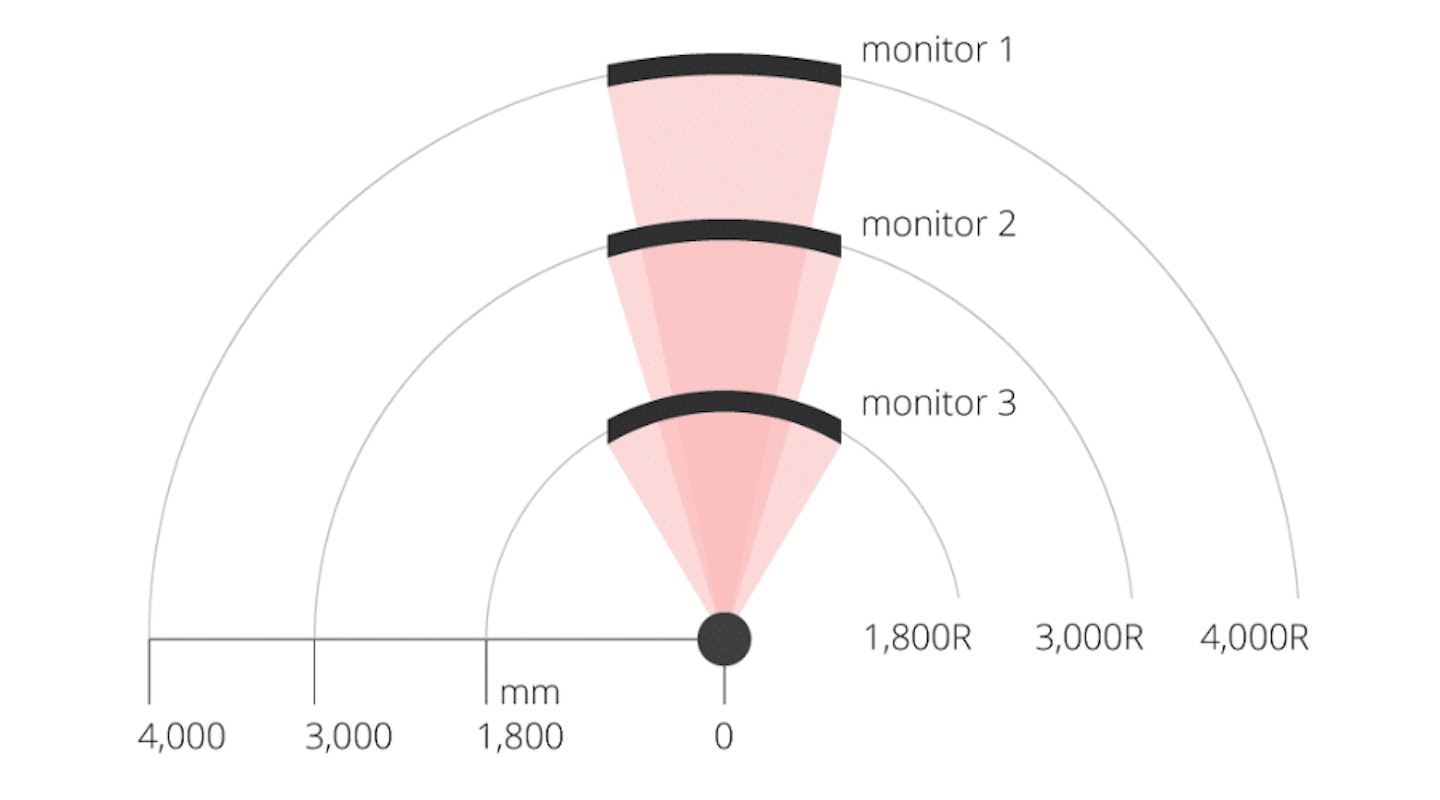
Why do I need a USB Type-C on a monitor?
Well, you might not! USB Type-C is just one of many methods for a desktop PC or laptop to connect to a monitor. While most will use HDMI, USB Type-C allows computers without HDMI output ports, like Apple Mac and Apple MacBooks, to connect to a monitor without needing an adapter.
What is colour gamut?
BenQ has a pretty succinct way of putting it: “...the range of colours which a particular device could produce or record.” There are different standards for measuring colour gamut, including sRGB, NTSC and P3.
Unless you have a special interest in colour representation - for example, photography, video, or creative projects - then the nitty-gritty of these standards are mostly irrelevant. Just aim for no less than 99% sRGB, and you’ll be fine.
What is refresh rate?
The refresh rate refers to how many times a screen completely reloads the display every second and is measured in Hertz (Hz). A 60Hz image will refresh 60 times a second, while a 120Hz screen will refresh 120 times. The higher the refresh rate, the smoother the image – low refresh rates can make fast-paced content appear to drag, stutter and jolt. Non-specialists and non-gamers will be fine to stay around 60Hz.
What is VESA?
VESA is an industry-standard term referring to the distance in millimetres between four mounting holes on the back of a TV or computer monitor. The distance is measured horizontally and vertically.
Without VESA mounting points, your monitor is not going to be able to be mounted. If your monitor has four holes, positioned as though on the four corners of a square, then it’s likely mountable. If in doubt, check the monitor specification on the manufacturer's website.
For the huge majority of PC monitors, you will only need to know about VESA 75, which measures 75mm between each hole and VESA 100, which measure 100mm.
